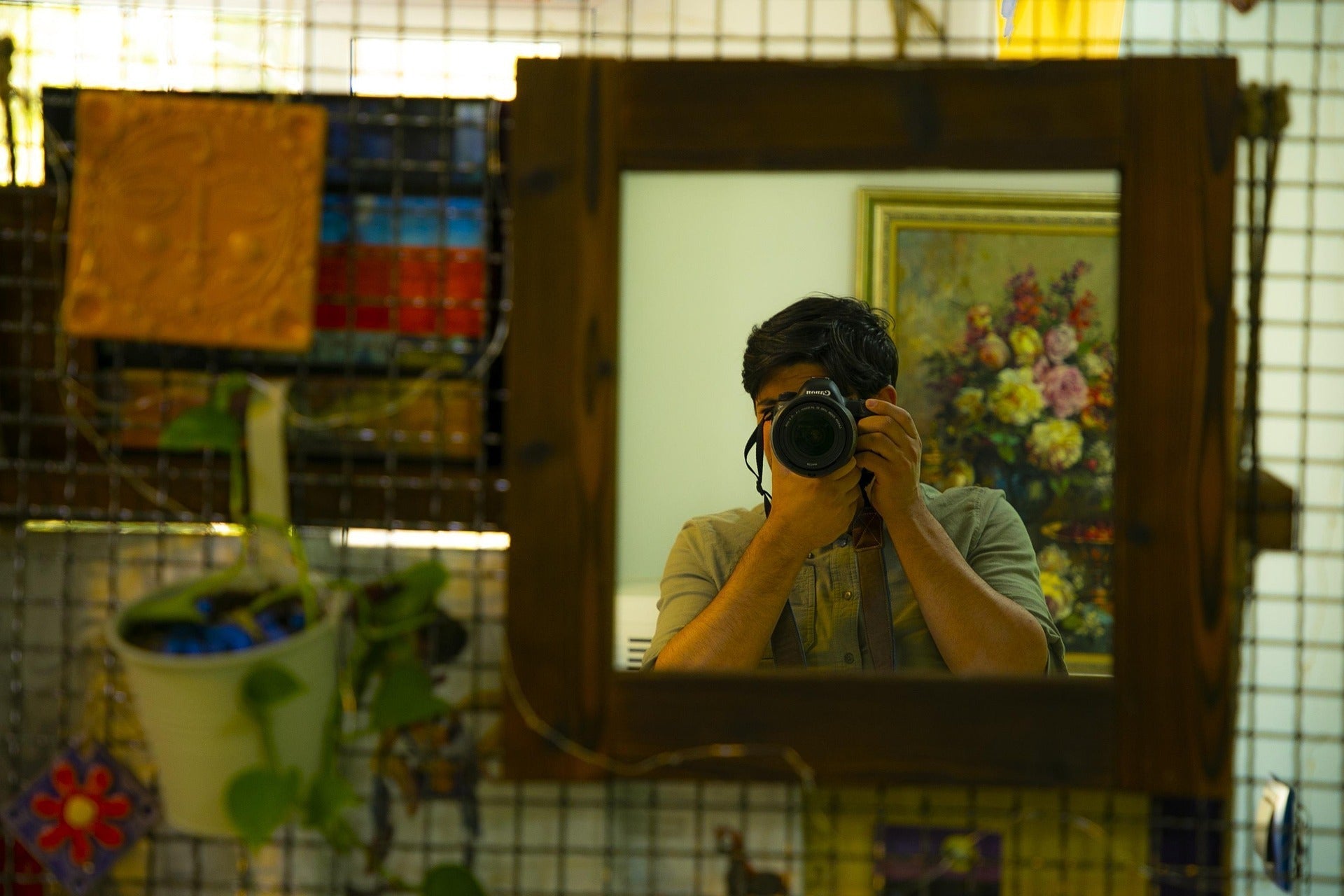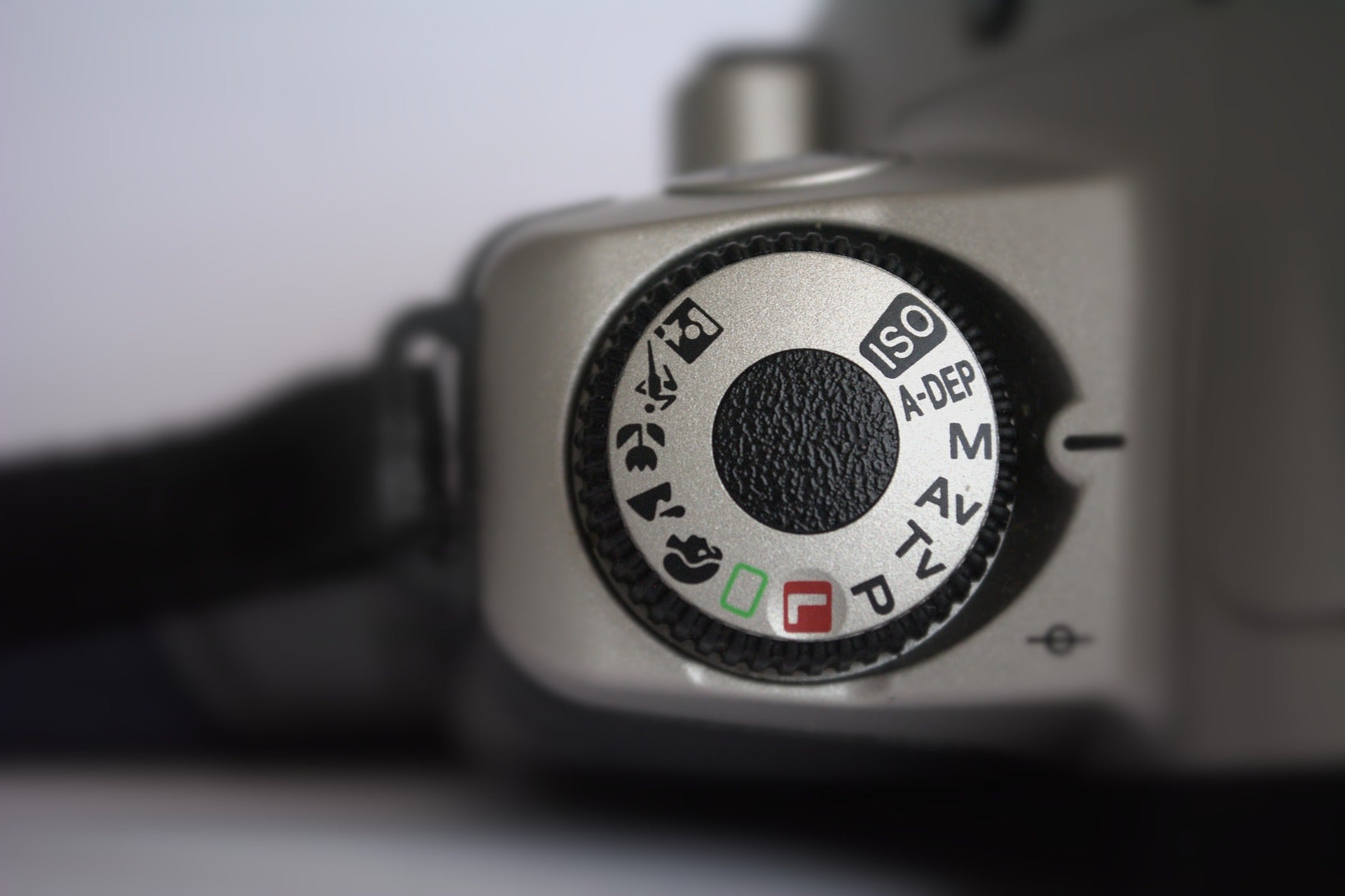
Self-portrait photography: expressing yourself through the lens
A self-portrait is far more than just a photo that you have taken of yourself. As
with all other portraits, it also requires an examination of the
person portrayed, in this case yourself. A good self-portrait demands that you
engage with your own identity, feelings and thoughts. As one
of the most personal art forms, the self-portrait thrives on the fact that one's innermost self is exposed and made visible and has a lot to do with exposure and vulnerability. However, there is of course a great deal that can be expressed in an artistic way and everyone has to find their own style and preferences in self-portraits with a camera.
History of the self-portrait: from painting to photography
The tradition of the self-portrait is probably as old as art itself, because people have always
been concerned with their own external image and their inner
self. We have been familiar with such images since antiquity and find important
self-portraits in all eras, with famous examples such as Rembrandt, van Gogh or
Frida Kahlo. Increasingly, we can observe in art history how these images
are becoming ever more expressive and increasingly reflect the inner life and self-image of their
painters.
Parallel to the development of photography, the photographic self-portrait also
developed from the 19th century onwards. Today, in the age of smartphones and selfie sticks, it is quite commonplace to take pictures of oneself. Anyone can stage themselves with fairly simple
means and play creatively with their own image in post-processing. Of course, not every selfie can be characterized as a self-portrait, but the boundaries are blurred.
Photo equipment for self-portrait photography
The equipment for self-portraits can vary depending on individual needs and preferences. However, in order to have as much creative freedom as possible, a good camera, a remote shutter release and a tripod should always be included. When it comes to cameras, both single-lens reflex cameras and mirrorless cameras can be used. You can also take great self-portraits with digital cameras or even simple cell phone cameras, but DSLR or mirrorless cameras give you much better image quality and more control over the settings. Cameras with a rotating display can be particularly recommended for self-portraits, allowing you to see yourself before and during the shoot and adjust your posture and composition of the image accordingly. A stable stand is crucial - especially when shooting without support. Add a compact travel tripod to your setup and store everything safely in a camera backpack that doesn't look oversized, even for indoor shots.
If you want to create a special mood in the picture, you should also equip yourself with
a wide range of lighting options. Many great self-portraits can be taken with
purely natural light, which is particularly flattering and works especially well outdoors. If the lighting situation is insufficient, an external flash can be used to diffuse the light and reduce shadows, and reflectors can be particularly useful. Under certain circumstances, a neutral background and special props can also expand the possibilities of creative photography in the area of
self-portraits.
Taking a good self-portrait
The motivations for wanting to portray yourself through the camera can be many and varied.
These include, for example, the need for artistic expression or the desire to show
yourself more intensively and authentically in pictures. Self-portraiture with the
camera allows you to give free rein to your creativity, try out new techniques
and explore the different facets of your self-image. At the same time, you get to know yourself better and explore new aspects of your own being. Self-portrait photography can also be used as a therapeutic tool, as it allows you to process your feelings and possibly even strengthen your self-confidence and learn to accept yourself better. And finally, photographic self-portraits offer a unique means of documenting changes in one's own appearance over many years and different phases of life.
If you want to create really good self-portraits that touch the observer and bring them a little closer to themselves in
the observation of another person, you should
first of all think about what exactly you want to portray in the picture.
Finding out the message of the picture is one of the most important planning steps,
before you even pick up the camera. With self-portraits in particular, the depiction of emotions plays an important role in the image narrative. Take your time with the setup - a structured photo bag helps you to quickly access the lens or remote shutter release without interrupting the creative flow.
Once you've thought about the general feelings, coloring, exposure and composition of the image, it's time to get down to business. Photography requires creativity and particularly great pictures are created when you boldly experiment with different techniques, perspectives and image compositions. By varying backgrounds, props and lighting conditions, you can always achieve new effects and create many different images based on a similar starting point. The technical requirements for a good self-portrait include always ensuring good lighting, an appropriate depth of field and an interesting composition.
Even when it comes to your own positioning and facial expression, you
can try out all sorts of things. However, to ensure that the end result looks authentic and truly
reflects an aspect of your own personality, you should move as
naturally as possible and show yourself as you are.
Creative techniques in self-portrait photography
In order to not only work on topics such as emotions in the image or your own
self-perception, but also to break new technical ground in photography
, there are a whole host of exciting techniques that are perfect for the
area of self-portrait photography. For example, it can be exciting to work with double exposure of the images and to superimpose different images on top of each other to create surreal effects. Reflections can also contribute interesting perspectives and effects. Water, glass, metal or simply the mirror at home can serve as a medium here.
Even small children are fascinated by their shadows and it is not only since Peter Pan
that we suspect that shadows can develop a life of their own under certain circumstances. In
self-portrait photography, playing with shadows is particularly suitable for achieving dramatic effects or creating an enchanted, mysterious atmosphere. You can experiment with both natural light and artificial light sources. Especially when experimenting with light and perspective, it is worth keeping your equipment organized - adjustable compartments or padded inserts in high-quality bags offer the necessary flexibility.
Conclusion
The way people present themselves in pictures and in everyday life is as diverse as their inner world. In the age of digital photography, in which we are constantly taking pictures of ourselves and sharing them on social media with a huge number of people, our self-portrayal seems commonplace. In contrast to the aesthetics of perfection that prevail here, however, we can show ourselves in a completely different way in artistic self-portraits. In photographic self-portraits, you can portray your innermost self with little effort and equipment and explore the depths of your own self. If you are still looking for inspiration for exciting self-portraits, you can find plenty of them in the pictures of famous artists. Whether on the road or in the studio, the right tools - from compact cameras to stylish bags for urban settings - will support your creative work from the initial idea to the finished portrait.



